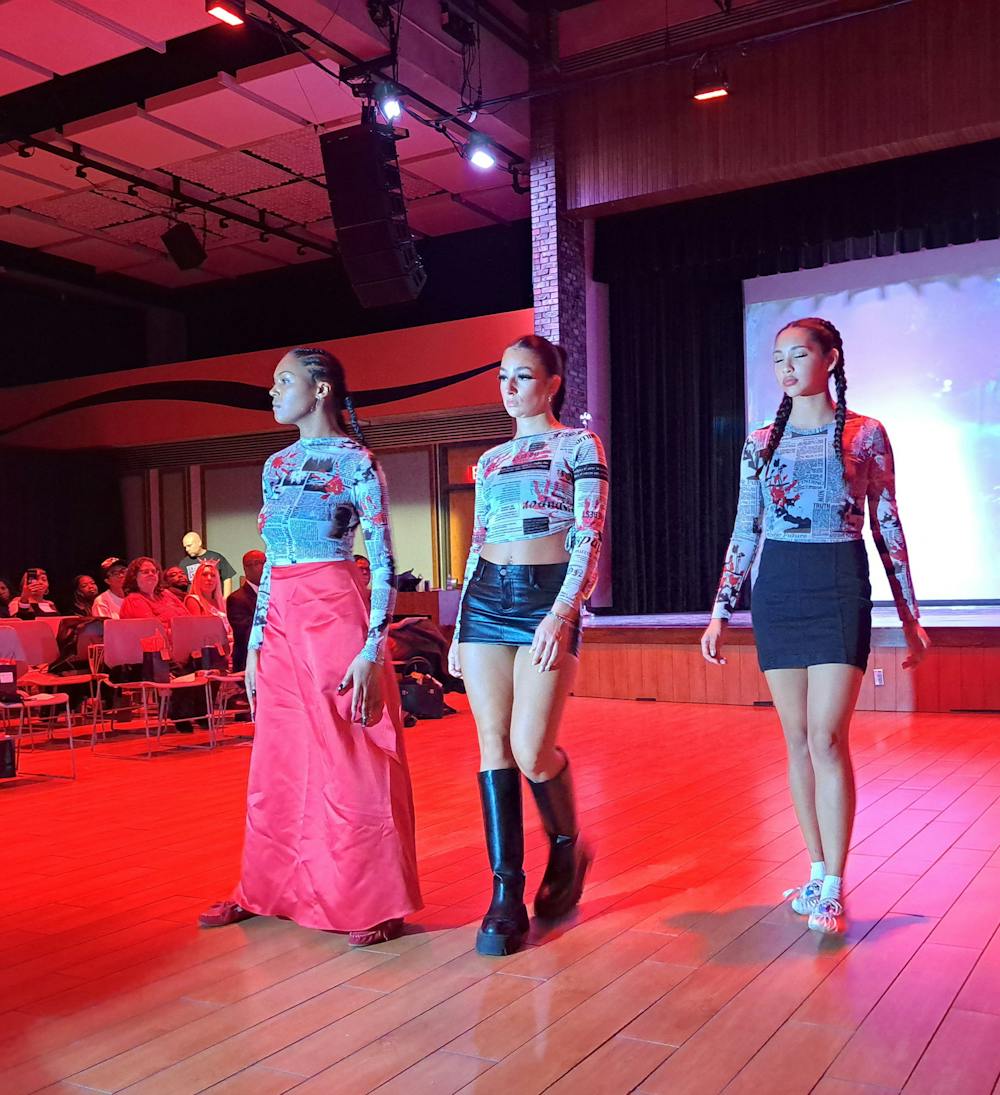For Indigenous women, murder is the third leading cause of death, often perpetrated by non-Native men. Of the reported 5,712 missing Indigenous women, the U.S. Department of Justice’s federal missing persons database only logged 116 cases. Although these are harrowing statistics, they are rarely recognized or talked about.
In the pursuit to change that, Aiyana Jacy Martin created the fashion show “Walk in Her Shoes” to spread awareness of this growing issue.
Martin is an Afro-Indigenous activist, model and student. She is Mohawk, Turtle Clan, from the Six-Nations of the Grand River in Ohsweken, Ontario, Canada. As the creator of Walk in Her Shoes, Martin uses fashion as a way to provide information on the ongoing crisis of missing and murdered Indigenous women (MMIW).
The show’s master of ceremonies, Tristin Jacy Salter, introduced each fashion segment by presenting statistics and facts about MMIW, then giving the audience a chance to see Indigenous designers' vibrant designs.
Not only did the show present information and fashion designs, they also had choreographed dance performances, which were performed throughout the event.
The color orange was represented throughout the show to highlight the thousands of survivors of residential schools. Starting in the 1800s, Native children were forced out of their homes and into these schools, stripping them of their Indigenous identities.
Models walked the runway with bright orange jackets, dresses and skirts as a symbol of hope and reconciliation to show their support for survivors of residential schools.
Another prevalent symbol throughout the show was a red hand covering a mouth. This has become the symbol of the MMIW movement and calls attention to the many Indigenous women whose voices have been silenced.
Red holds significant power within Indigenous culture, as it is believed to be the only color spirits can see. Displaying red dresses is a way to call back to the missing spirits of Indigenous women and allow loved ones to lay them to rest.
The strawberry, a symbol of the heart to many Indigenous tribes, was also seen throughout the show. It’s a sacred fruit that deeply connects to the Haudenosaunee people’s creation story.
Although there is much to be done to prevent the deaths of Indigenous women, Walk in Her Shoes reveals the importance of spreading knowledge on MMIW.
To learn more about the MMIW movement, visit https://www.niwrc.org/
The arts desk can be reached at arts@ubspectrum.com





